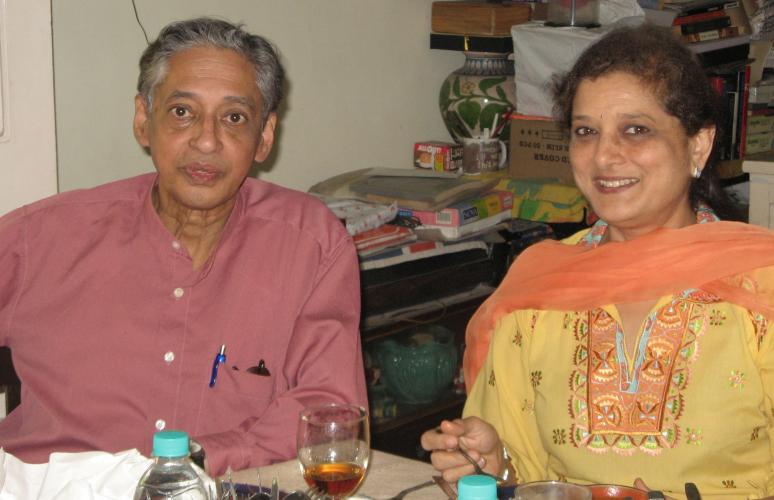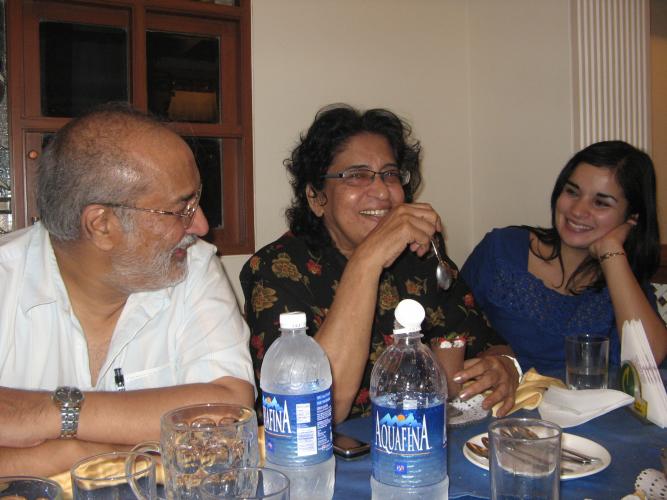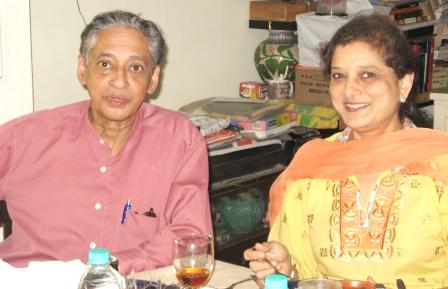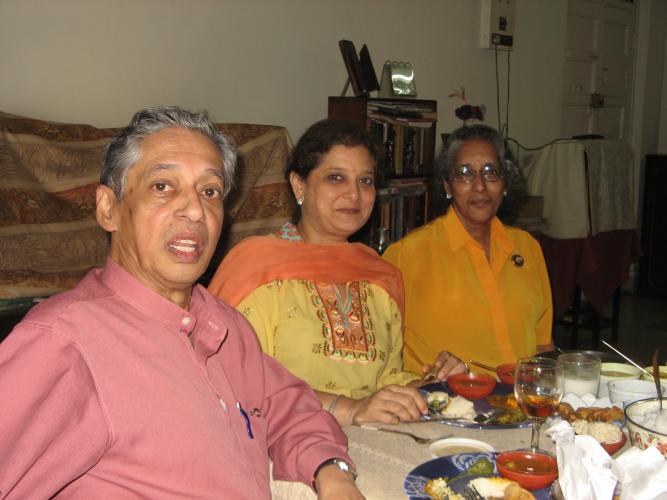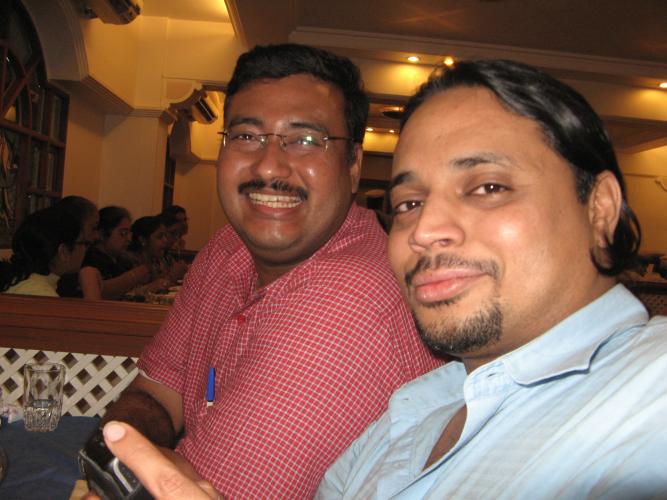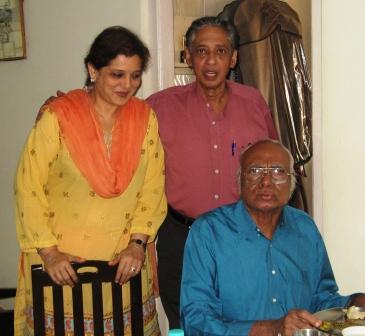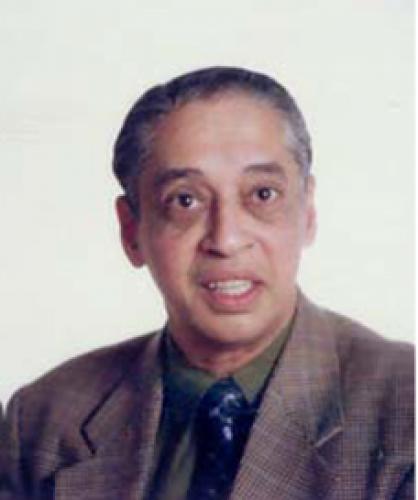Edgar J DaSilva - Online Memorial Website
Memorial Website - Edgar J DaSilva
This memorial website was created to remember our dearest Edgar J DaSilva who was born in India on August 21, 1941 and passed away on October 28, 2007. You will live forever in our memories and hearts.
Edgar J. DaSilva, 66, was an Indian microbiologist whose passion for the practical application of his subject drove him to champion biotechnology in developing countries around the world.
| Jacques Richardson |
Thank you, so much, for contacting me. I am nonplussed at the news of Edgar's death, and wish to convey my deep sympathy to you, his family, and all the colleagues who have worked with Edgar over the years.
Edgar is responsible not only for having created the Unesco-sponsored centres of microbiology dispersed throughout the world--and following through so that these research centres became fully operational and productive. He was also devoted to the building of valid scientific resources accessible to young scientific investigators throughout the developing regions, meaning the poor world.
Edgar contributed steadily, furthermore, to the literature of scientific research during the decades that he was affiliated with the United Nations system. He wrote for journals such as 'Impact of Science on Society' and reviews specifically concerned with the world of microbiology and the expanding biotechnologies; he continued to publish articles well into his life of "retirement".
Edgar was in every way dedicated to his professional mission and, even after retirement from Unesco, continued to respond to demand for his lectures in
I recall the observation made about Edgar by Federico Mayor, a biochemist and former director-general of Unesco who was extremely familiar with Edgar's formidable professional reach: "DaSilva is a real scientist, and we are fortunate to have him on our team".
I knew Edgar well for more than forty years, and Indian to the core, and shall miss his unending jokes and ready smile.
Jacques Richardson
| Dr. Kazuo Komagata |
I received your E-mail message with Dr. Edgar DaSilva through Prof. H. Sugawara, WDCM, in
I express my deepest condolences to passing away of Dr. Edgar DaSilva. I have had a long acquaintance with him since I met him at
Dr. DaSilva visited developing countries very often as the officer of UNESCO and MIRCENs. He worked for the development of culture collections of microorganisms and biotechnology, and encouraged personnel and students in the countries. He was very open-minded and kind to all persons around him.
Dr. DaSilva was elected the Vice President of the World Federation for Culture Collections (WFCC) in 1973 at the 2nd International Congress of Culture Collections (ICCC-2) at San Paulo. He served on the WFCC from 1973 to 1976, and he made effort to strengthen the WFCC (Int. J. Syst. Bacteriol. 25, 90-94 1975).
I personally worked with Dr. DaSilva for the MIRCEN network and the WFCC many times abroad and in
Dr. Kazuo Komagata
(Professor Emeritus of the
| Professor ST Chang, OBE |
Thank you for your latest message. The followings are some brief comments on Edgar’s involvement with my mushroom training and research programs at the
Regards,
S. T.
Professor ST Chang, OBE
Emeritus Professor of Biology
| Fernando Acevedo |
I am really very touched by the death of Edgar. Edgar and I were good friends and I appreciate him ver much, both as a biotechnologist and as a human being.
We met over 35 years ago and he was very helpful with our
I just want to share with you these memories of a fine man.
Sincerely,
Fernando Acevedo
| Colin Ratledge, Dept-Biological Sciences |
Edgar was a splendid person and it was my privilege to have met him on several occasions and to have worked with on several projects. Edgar was irrepressible. His energy was outstanding. His contribution to the development of microbiology throughout the developing world was, I believe, unsurpassed.
Edgar worked tirelessly until his retirement six years ago through the offices of UNESCO to build up an international network of microbiology laboratories that could undertake the training and development of microbiologists in developing countries. He conceived of the idea of there being a number of these laboratories in Africa, South America, Asia and also in Europe, North America and
Edgar's vision was that these Centres would be responsible for the use and preservation of microorganisms for deployment in environmental management. There was to be particular emphasis on Rhizobium gene pools as these were so important for the growth of various leguminous crops which are so important for the economy of many countries. Altogether, 15 MIRCEN Centres were created during the late 1970s and early 1980s.
Soon after the establishment of these Centres, it became clear to Edgar that publication of microbiological work being carried out in the developing countries needed its own journal that could recognise the difficulties under which such work was being carried out. The work would often be unique in that it would be describing microbial systems and the development of projects that were unknown elsewhere. Often this research would offer new insights and possible solutions to old problems. However the research might not reach the highest standards of other research in Europe or
Edgar's contribution to world microbiology was massive; no one came close to what he achieved. He tirelessly pursued these goals believing that microbiology and biotechnology could offer so much to developing countries to help them develop their own unique resources and make a lasting impact on microbiology throughout the world.
Microbiology and biotechnology were seen as important activities to give confidence to workers throughout the world that what they were doing, even with highly limited resources, was important and could be a major way of improving hygiene and agriculture as well as providing simple biotechnology products for people. His legacy will live on for many decades to come.
It was a privilege to have known Edgar and to have worked with him. He will be missed by colleagues in tremendous numbers throughout the world.
I will try to contact some of Edgar's old colleagues.
Best wishes
Colin
| Dr. Haresh Kamdar. | Prof. Biotechnology. | November 28, 2011 |
| Mukesh Gajaria | Unit,Hospital for Sick Children,Toronto,Canada | November 27, 2011 |
The world has lost an eminet man.
Deepest condolences to his family and his close friends.
| Mukesh Gajaria | Chief Dialysis Technologist, | November 27, 2011 |
| Mara Estero | My Condolences for the Family | September 30, 2011 |
| clarence fernandez | Obit URL | June 10, 2008 |
Link to World Academy of Art and Science newsletter:
